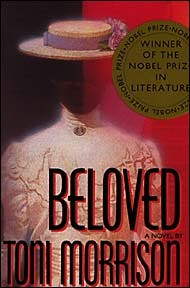
Let us remember that slavery in America lasted 264 years, from 1619 to 1863, and that this aspect of American history is also British history, because from 1607 until the American Revolution of 1783, the country was a British colony and known as British America. She was clear in her intention with this novel, which was to resurrect America’s slave narrative through the stories of the individuals who had endured it. Reading Morrison always feels like coming home, as her writing connects me to my emotions, my imagination and my soul. I read slowly, allowing its gorgeous language, vivid descriptions and sensory atmospheres to sink in. This past week I re-read Beloved in order to write this essay and I spent a few days on my sofa, summer rain falling outside, relishing the deep pleasure I have always experienced in savoring her fiction. There is a giant leap, however, in the scope and sophistication of this novel compared to The Bluest Eye, which is a shorter and simpler read.


Yet, even when it seemed oblique in parts, there was enough drama and tension to captivate me. I first read Beloved, Morrison’s fifth novel, soon after it was published in 1987, and found it more difficult than her earlier works. I still have that now extremely mashed-up copy of The Bluest Eye on my bookshelf, alongside every other book she published.

How I loved her lush prose in this, her first novel, and the quietly intense dramatic storytelling style that centered young Black females, especially the storyline around colorism, with Pecola, the dark-skinned Black girl longing for blue eyes in a country that elevated white beauty and deemed blackness ugly. As soon as I read The Bluest Eye in 1981, I was hooked on Toni Morrison’s writing.


 0 kommentar(er)
0 kommentar(er)
